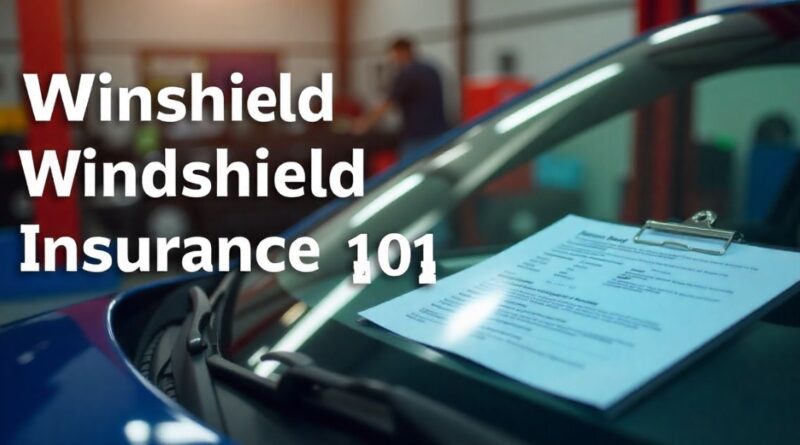Insurance and Your Windshield: What’s Covered and What’s Not
A cracked windshield might seem like a minor inconvenience, but for many drivers, it’s the first real test of how well their car insurance works. Between rock chips on the highway, storm damage, or the occasional vandalism, windscreen repairs are among the most common claims filed with auto insurers worldwide. Yet, many drivers remain unsure about what their policies actually cover and what might come out of their own pocket. Understanding how insurance applies to your windshield can save time, stress, and unnecessary costs.
How Insurance Covers Windshield Damage
Windshield damage is typically covered under the comprehensive portion of an auto insurance policy. Comprehensive coverage protects your vehicle against non-collision-related incidents—things like hail, falling debris, animal impacts, theft, or vandalism. If a stone flies up from the road and cracks your windshield, it’s this part of your policy that steps in. In many countries, comprehensive coverage for glass is optional, meaning drivers must choose to include it when purchasing their insurance. Without it, you might be responsible for the full repair or replacement cost.
Repair vs. Replacement: What Insurers Decide
For small chips and cracks, many insurers cover repairs completely, often with no deductible. Repairing rather than replacing the glass is not only cheaper for the insurer but also faster and more environmentally friendly. However, once a crack exceeds a certain size—usually around six inches or if it obstructs the driver’s line of sight—a full replacement becomes necessary. In such cases, most insurers still provide coverage, but the deductible may apply.
Full Glass Coverage Options
Some insurance companies offer full glass coverage as an add-on or as part of premium packages. This type of coverage pays for both repairs and replacements without requiring a deductible at all. It’s particularly useful for those living in areas with high traffic, gravel roads, or extreme weather, where windshield damage is more common. However, policies differ significantly between insurers and even between regions, so it’s crucial to read the fine print.
What’s Not Covered by Your Policy
It’s also important to understand what isn’t covered. Damage caused by poor maintenance, pre-existing cracks, or improper installation usually falls outside standard coverage. For example, if your windshield leaks because it was installed incorrectly by a third-party technician, your insurer may reject the claim. Likewise, scratches or cosmetic defects that don’t affect visibility are often excluded from coverage. In some regions, driving with a damaged windshield for too long before seeking repair can also result in a denied claim, as insurers may argue that negligence worsened the damage.
Filing a Windshield Damage Claim
The process of filing a claim for windshield damage is generally straightforward. Most insurers allow you to submit the claim online or directly through an auto glass repair partner. Many even have preferred networks of certified technicians who handle the paperwork on your behalf. This convenience has made glass claims some of the easiest and quickest in the insurance world. However, as simple as it seems, it’s always wise to contact your insurer before proceeding with any repair or replacement. In some cases, using a non-approved service provider can void coverage or limit reimbursement.
International Coverage Considerations
The rules can vary even more when vehicles cross borders. International drivers—especially those shipping vehicles abroad or operating in multiple countries—must be mindful of how coverage applies under international insurance law and claims. For instance, a windshield damaged during international transport may fall under marine or cargo insurance rather than a standard automotive policy. Similarly, coverage for repairs in foreign countries may depend on whether your insurer has local partnerships or if you’re covered under an international or temporary extension policy. In these situations, documentation becomes critical, as each jurisdiction may have unique standards for damage assessment, liability, and claim procedures.
Will a Windshield Claim Affect Your Premium?
One detail many drivers overlook is how a windshield claim might affect future premiums. While small repair claims rarely cause an increase, repeated or high-value replacements could be flagged as frequent claims behavior, potentially raising rates. Some insurers categorize glass damage separately to avoid penalizing drivers for unavoidable incidents, while others may count it toward your overall claim history. It’s always best to ask how a specific claim will affect your record before proceeding.
Technology and the Rising Cost of Windshields
In the past decade, the cost of replacing windshields has risen significantly, largely due to advanced technology. Modern vehicles often have sensors, cameras, and heads-up displays integrated into the glass. Replacing these windshields requires recalibration of the car’s safety systems, which adds to the overall cost. While most comprehensive policies now include coverage for recalibration, older or more basic plans might not. If your vehicle features advanced driver-assistance systems, make sure your policy explicitly includes these services to avoid unexpected out-of-pocket expenses.
Paying Out of Pocket vs. Using Insurance
Some drivers consider paying for small repairs themselves to avoid potential premium changes. However, this can be a false economy. Even a minor chip can spread quickly, leading to a much more expensive replacement later. Using your coverage for timely repairs is often the smarter and safer choice, particularly when no deductible applies.
Why Understanding Coverage Matters
Ultimately, knowing your policy’s details before damage occurs is key. Every insurer defines glass coverage slightly differently, and understanding those distinctions can make a major difference when something goes wrong. Keep copies of your policy handy, ask questions about deductibles and exclusions, and choose a reputable repair service that works with your insurer.
Your windshield is not just a piece of glass—it’s a vital part of your car’s safety system. Treating it as such means not only keeping it clean and damage-free but also making sure your insurance is up to the task when you need it most. Clear visibility on the road begins with clear understanding of your coverage.

